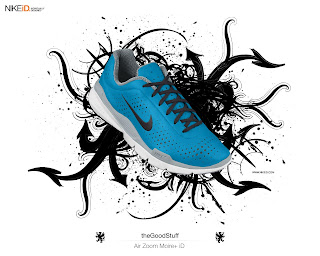In recent times, the traditional approaches to product branding have been challenged at even the most established companies. The Internet has changed the styles and techniques used in product branding and with the rapid development of this medium, traditional approaches are all but disappearing because of rising advertising costs and other factors. In essence, advertisers and marketers have felt the push toward online branding as traditional advertising is challenged by competing technologies such as the Internet and other cheaper alternatives. As a result, many companies-large and small- have had tremendous success with this shift in the branding of consumer products from traditional media such as print and television to the Internet.
One company that seems to rely heavily on the Internet for the branding of its products is Procter and Gamble (P&G). The company prides itself on being truly global in its offerings and boasts that their products 'touch the lives of people around the world three billion times a day'. As with any successful company, P&G operates with its core principles-personal integrity, respect for the individual, and doing what's right for the individual-rooted in its day-to-day operations.

There are two main models that companies can employ with respect to the organization of their brand portfolios: a house of brands or a branded house. Under a house of brands strategy, the company markets a range of separate brand names, with product-specific marketing. Conversely, a branded house strategy treats all products as an integrated brand, meaning that the company acts as the brand and all its products as subsets of that main brand.
P&G employs a house of brands strategy for the hundreds of products it offers to consumers.
This can be observed in the company's product-specific marketing in terms of the taglines, colors, and brand personalities. For instance, Bounty Paper Towels has long been marketed as lasting, and persistent and has come to be known as 'the quilted quicker picker upper' while Puffs Tissues has been marketed as soft, cuddly, and nurturing with its 'A nose in need deserves Puffs indeed' tagline. These two products, despite being in the paper products category, are marketed very differently to consumers.


P&G has several categories under which its various products can be found, ranging from Personal & Beauty to Pet Care & Nutrition. Under each of these categories are sub-categories that are more specific to consumer needs. For instance, under the Personal & Beauty category, Body Wash, Shaving, Colognes, Oral Care, and Hair Care are all sub-categories. With this approach, customers can easily navigate to specific products or brands with the click of a mouse. Most products have a unique domain name (eg,
downy.com or
braun.com) and a site that reflects its personality through the use of unique colors and taglines. There is usually no mention of the product's link to P&G, making it seem as if there is no affiliation with the parent company.
P&G's house of brands approach is ideal because of its many product offerings. This strategy allows the company to easily segment their target markets, while simultaneously reinforcing the personalities of the various product lines that are available to consumers. In addition, this approach to online branding avoids confusion and establishes dominance in the myriad of product categories that are available to P&G consumers. Such an approach also allows consumers to form brand communities and gives the company considerable leverage in brand-specific promotions.
P&G's house of brands approach may also have some weaknesses in that most products are not explicitly associated with the company, resulting in decreased corporate recognition and image. Also, with such a vast array of products, P&G does not have a consistent brand message and this may be viewed as an opportunity for competitors. There is also potential for brand promotions to be overlooked by consumers of a certain brand if they have not been to that particular site for a long time. However, as seen below, P&G has tackled that problem by highlighting promotions and contests on the
main site of the company.

Overall, P&G's approach to online branding is ideal because of the various product offerings that are available to consumers and the need for P&G to differentiate its brands based on their individual functions and messages.














